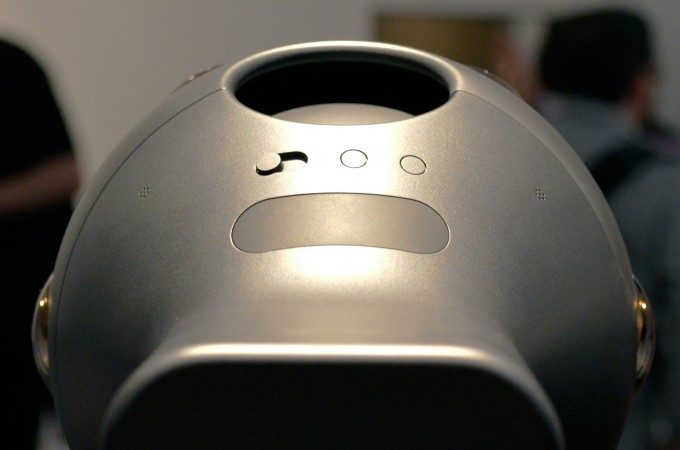Having sold its phone business to Microsoft in 2013, Nokia sets sail for new lands, but it doesn’t look like they’ll be leaving their design sensibilities behind. The company’s new Ozo VR camera is a slick, solid unit that’s thoughtful from form to function.
Anyone who knows Nokia knows of the company’s top-notch design skills. It was seven years ago that I unboxed the Nokia N810 and felt that I was looking at the future. Despite being tied to software that would ultimately be undone by newcomers iOS and Android, the device itself was and still is one of the most beautiful pieces of consumer electronics that I’ve ever owned. I actually still have it, and occasionally wake it from its storage-slumber to gawk and wish that it ran a modern mobile operating systems (for it would surely replace my iPhone).
But that was another era. What of Nokia today? The company is pitching their recently revealed Ozo VR camera as the start of a new direction for the company, but they aren’t leaving their design prowess behind.
See Also: First Look – Nokia’s ‘OZO’ 3D VR Camera Aims at Professional Market with Real-time 3D Preview
Ozo’s design is undeniably thoughtful. The gun-metal grey chassis is alien in shape, a sort of lightbulb laying on its side; while foreign, the shape feels as purposeful as a sculpted square.
The camera’s front (if there is such a thing on a camera that shoots in 360 degrees) is the ‘top’ of the lightbulb shape. Seen only from this side, you’d think you were looking at a complete sphere. Adorned with eight cameras and microphones, there’s nowhere around the camera that you can go to escape its gaze (or hearing). Even in the back, where you might think there’d be a sliver of unseen space, the 195 degree field of view of each camera covers the complete sphere.
The lenses protrude from the main sphere of Ozo, bending light such that you see down into the aperture no matter which direction you’re looking from. It’s almost creepy, like one of those paintings that seems to watch you no matter where you are in the room.
As those that cobbled together 360 degree cameras from an array of GoPros have discovered, heat can quickly become a problem when you’re packing that many devices so close together. Ozo handles this with an interesting cooling mechanism. Atop the camera is a large opening that’s met with an inner sphere that seems to levitate inside the outer casing. Air can exit the top opening, after flowing around the inner sphere (and the camera guts contained within), having entered an identical opening on the bottom of the camera. That bottom opening also hides a mounting point for a tripod adapter and other mounting hardware.
With an on-board battery and storage media, Ozo can operate standalone with no cables, and can even be controlled remotely over WiFi. The bottom of the lightbulb shape has a cap end that can be removed for access to the battery and storage. Ozo can also connect to a standard SDI cable and external power for standard on-set operation, with ports hidden under a covering that’s embedded under the bottom of the cap end of the camera.
Mirroring that cover on the top are two buttons and a sliding switch. The switch appears to be for power, while the rightmost button, which glows under power with a red ring around its insert, most likely initiates recording. The middle button’s function is unknown at the moment, but is likely to toggle some recording options. A plastic strip below the buttons likely houses the device’s WiFi antenna (giving signals a way out of the otherwise metallic enclosure).
One of the first opportunities for content creators to work with Ozo is through the Nokia sponsored ‘Look Around You’ contest that’s offering $42,000 in prizes (including a grand prize of an Ozo camera) for pitches and production of short film VR experiences shot with the camera.
Nokia plans to release Ozo in Q4, 2015. Pricing and exact camera specifications have yet to be revealed.
Disclosure: Nokia covered travel and lodging expenses for Road to VR to attend the Ozo reveal event.













